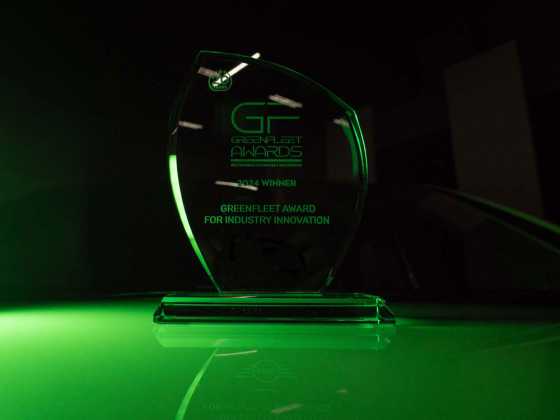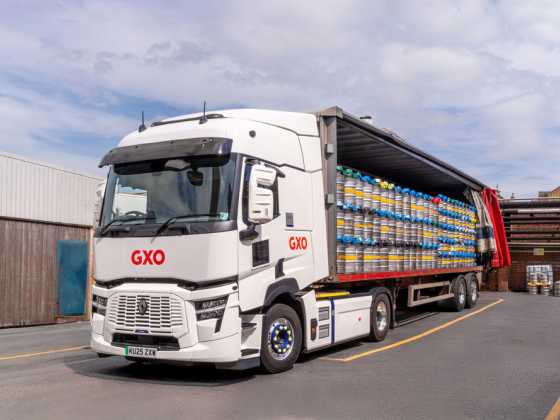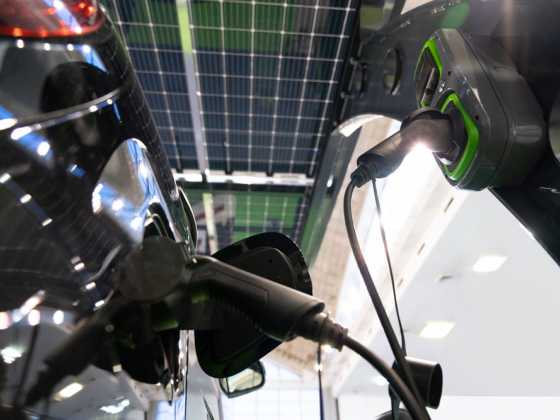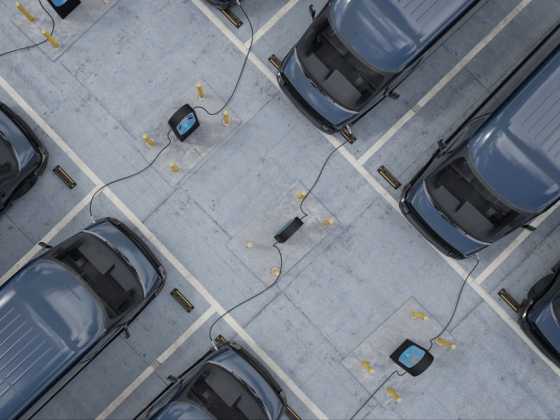Learning from Dundee’s electrification success

Dundee City Council’s Fraser Crichton shares his work to transform the council fleet to electric, as well as help make Dundee one of the UK’s leading EV-friendly cities
As corporate fleet manager for Dundee City Council, I have been at the forefront of Dundee’s transition to becoming one of the UK’s leading EV cities. With over two decades at Dundee City Council, starting as a Transport Officer, my commitment to transforming transportation began thirteen years ago with an air quality meeting that shed light onto Dundee’s severe air quality issues.
Critically, we learned that Dundee’s transportation system accounts for 35 per cent of Dundee’s carbon emissions. As Scotland’s fourth largest city, Dundee’s unique topography in the bowl of an eroded volcano traps pollutants, resulting in some of the most polluted streets in the country. This issue, along with the first delivery of Nissan Leafs, kick-started Dundee’s mission for cleaner air and the transition from ICE to e-mobility.
Today, Dundee has one of the largest EV fleets of any authority in the UK, with 223 vehicles making up 30 per cent of our whole fleet. This is facilitated by an extensive network of electric vehicle charging hubs and infrastructure covering the city.
How did we get here?
Dundee began its electric journey with its own council fleet. Dundee added the first fully electric vehicles into our fleet in 2011, beginning with four Nissan Leafs - the first EV we had seen that could rival a diesel engine. It was a slow but steady uptake, and it took two to three years for us to have added 20-30 EVs into the council fleet.
Realising the council’s limits, we knew we had to explore other tactics in order to employ our strategy across the whole city. Inspired by a visit to Oslo, we began to shift our thinking to consider energy first and the vehicles second. We refocused on the concept of hub charging using renewable energy in order to electrify Dundee’s taxi fleet – one of the most significant contributors to air pollution in Dundee.
Rather than forcing the taxis to go electric, we offered incentives. This included a £10 reduction in the taxi test fee for EV vehicles and low tariffs. This has led to 35 per cent of taxis and private hire vehicles now being electric. In order to cater for long taxi journeys, we expanded regionally, putting charging infrastructure in hospitals and other authority buildings across Scotland. Through regular and open discussion with the taxi liaison committee, it was agreed that all new private hire vehicles in Dundee must be electric. Having a large, new sector of Dundee advocating for EVs was a significant stepping stone.
By early 2021, our council electric fleet consisted of over 100 cars, two minibuses, a large mechanical street sweeper - and two 26-tonne RCVs, the first fully-electric bin lorries in Scotland (named ‘Bin Diesel and Leonardo Di Charge-io’). By 2030, all 36 bin lorries will be converted to electric, saving an estimated 720,000 kg of CO2.
The council’s all-electric fleet has now travelled over 5.6 million miles, saving an incredible 250,000 tonnes of carbon dioxide. Successfully on the road to electrifying the council fleet, we turned our attention to finding EV solutions for the wider city.
Making Dundee an EV friendly city
We learned many valuable lessons in the thirteen years, which were key drivers in transforming Dundee into an EV friendly city.
Dundee became one of the UK’s leading EV cities by developing a strategy that looked beyond the council to encompass businesses and residents city-wide. We took a holistic approach, partnering with industry leaders in both the public and private sector.
Our four innovative public charging hubs demonstrate successful partner collaborations. At our Clepington Road hub, we collaborated with SWARCO, Connected Energy and Envevo to create a groundbreaking ‘second life’ battery system that captures excess solar and charges from the grid at off-peak times when tariffs are cheaper. We also partnered with Bluewater to provide ‘world-first’ rainwater harvesting technology, allowing EV drivers access to clean drinking water for free. In addition, we recently unveiled Europe’s first retractable chargers in Dundee, in partnership with Urban Fox. Their UE One auto retracts flush with the ground when not in use, ensuring pavements remain clear and reducing trip hazards.
Other private-public collaboration projects include providing charging points for Ember, the UK’s first all electric inner-city bus service. This service provides the public with an option for green, peaceful travel and helps drive Dundee further towards an electric future.
Ensuring accessibility for all EV drivers
A key aim for us was to ensure that Dundee’s EV charging infrastructure is inclusive for all. Vauxhall’s recent study revealed that just two per cent of on street chargers meet accessibility guidelines, a shocking statistic that highlights the extent of the issue the EV industry has with accessibility. Guided by the BSI PAS 1899:2022 standard for accessible charging infrastructure, Dundee had the opportunity to embed accessibility into our design process. This standard - along with advice from charities and focus groups with disabled people themselves - directly informed the design of our Clepington Road hub, which we believe goes further than any other UK hub to ensure equitable access. Features include colour coding, longer cables on retention systems, unobstructed pathways and level access.
Our next accessible project is already underway- the Bell Street multi-storey car park. Set to be transformed into yet another pioneering green transport hub, it will feature a reduced number of parking spaces to ensure ample space around each car.
Preparing to make mistakes
One of the hardest but most beneficial lessons learned is that you don’t always get it right the first time. Over the course of Dundee’s electrification, every type of charger was trialled and tested, leading to personal learning curves in understanding battery sizes and energy capacity. Mistakes are inevitable, but the lessons born from these errors are what’s ultimately going to lead you to long term success.
Effectively communicating with the public
Dundee’s transformation did not happen overnight. One of the main obstacles to Dundee’s EV transformation has been public perception. The dangers of invisible poisonous gases and the need to transition to low carbon vehicles can be difficult to communicate. We counter this by making sure that communities are up-to-date with the newest EV developments, to reassure them that they are a part of Dundee’s bigger vision. While technology and innovation obviously play a large role, getting communities onside has been one of the main drivers of Dundee becoming a leading EV city.
Dundee City now has the best ratio of vehicles per plug-in charger in the whole of the UK; one charger for every sixteen EVs. If we continue on this trajectory we will achieve our aim of becoming a fully electric city by 2035.
Although at its heart this project has been about electrifying the council fleet, we believe that the impact on the city has been much greater. We have become a pioneering force in the uptake of EVs within local governments and a role model for how to successfully transition into becoming an electric city.






